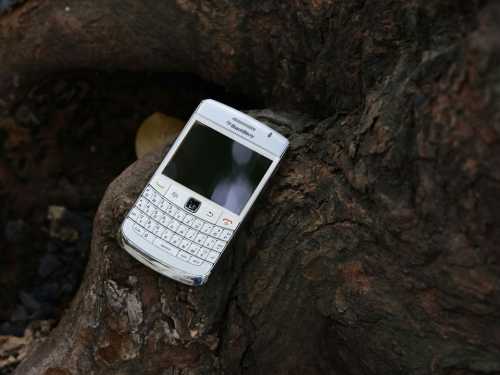
In 2005, BlackBerry smartphones were a symbol of power, success and technological progress. They were used by presidents and kings, show business stars and influential businessmen. People lined up to buy the dream device with a branded QWERTY keyboard. It seemed that nothing could stop the victorious march of the Canadian company. However, in just a few years, BlackBerry practically disappeared from the smartphone market, leaving behind only memories. But to understand how this dramatic decline occurred, you need to go back to the sources.
The beginning of the path
In Waterloo, Ontario, two inseparable friends—Mike Lazaridis and Doug Fregin—spent most of their time in the Lazaridis family garage. While the other teenagers played in the yard, Mike read science papers and Doug mastered the art of circuit board construction.
Mike Lazaridis knew from childhood that his path to success lay through knowledge. He came from a middle-class family, so he could not count on a prestigious education at the expense of his parents. However, at the age of 12, the young inventor received a prize from the Windsor Public Library for reading all the science books in its collection. He paid for his university education himself by finding an unexpected solution to the problem of his school's computers that constantly hung up – he created a simple electrical circuit for their safe reboot. The invention turned out to be so successful that other schools bought it.
In 1979, Lazaridis enrolled at the University of Waterloo in the Department of Electrical Engineering and Computer Science. In parallel with his studies, he developed his small business: creating primitive memory cards for some clients, barcode readers for others, and also designing LED signs. By the end of his studies, he even received a grant from General Motors and began a fruitful collaboration with the auto giant.
Together with Doug, the friends created their first device, a small calculator-sized Budgie computer. When connected to a monitor, it could display text typed on the keyboard.
The inventors began selling it as a digital advertising banner, and when a local hardware store and shopping mall agreed to test the device, it attracted the attention of the local press.
In 1984, two young enthusiasts officially registered Research In Motion Limited (RIM). The beginnings were humble – a small space in the Waterloo shopping center. For the first five years, the company barely made ends meet. Their Budgie never became a hit, and by 1989 they had to move to a small room above the shop. Money was so tight that new employees were sometimes paid in company shares.
During these difficult years, RIM was actively looking for its niche in the technology market. The company took on various projects: from barcode readers for cinema equipment to advertising display systems. Lazaridis and his team were constantly experimenting with wireless technologies, realizing that the future was in mobile communications. This search led to a fateful meeting with Rogers Cantel.
First success
Rogers Cantel, a large cellular operator, began looking for a way to transmit short text messages over radio waves. The company had a large fleet of vehicles, and instant messaging could help coordinate drivers. This was an era when cell phones cost $4,000 and were only available to very wealthy businessmen. SMS was still three years away, and wireless internet was a full decade away.
The RIM team received a mysterious set of components from Rogers Cantel: boxes of parts, a thick manual in Swedish, and a device called Mobitex. The technology was developed by Swedish telecommunications giant Ericsson in conjunction with the state-owned emergency telephone company, allowing ambulances and rescue workers to exchange text messages.
Mobitex was a promising technology—Ericsson, together with the Swedish state telephone company, had already successfully launched a network for emergency services and was starting to sell the technology around the world. Rogers Cantel was one of the first buyers in North America, but faced a problem: the infrastructure was too expensive and it was cheaper to produce it themselves. That’s why they turned to RIM.
The turning point in RIM’s history was the arrival of Jim Balsillie. In the early 1990s, this successful businessman, recently laid off from a large construction company, decided to invest in a promising startup. Despite the fact that RIM’s office was a modest space with a few tech enthusiasts, Balsillie saw the potential of the company. He not only invested all his savings, but even mortgaged his house to get additional funds for investment.
Balsillie became Lazaridis' partner and took on the roles of chairman and co-CEO. This alliance proved crucial to the company's future success. Although Balsillie had no experience in the IT industry, his Harvard education and constant pursuit of self-improvement made up for this lack.
In the early 1990s, RIM created application development tools for Mobitex and the RimGate email service. The company methodically built the foundation for its future success by focusing on security and data reliability—features that would later become BlackBerry's calling card.
The path to innovation
By the mid-1990s, RIM had already gained considerable experience in wireless technology, but was still searching for its breakthrough product. At that time, the pager market was rapidly developing – Motorola with its PageWriter 2000 was the recognized leader in this segment.
In 1996, RIM introduced the Interactive 900, a device with a keyboard and a flip-up screen. While the idea was innovative, it was too bulky and its battery drained quickly. With production costs rising faster than sales, the company was faced with a choice: back off or take a risk.
Lazaridis decided to take a risk, but radically revised his approach. He realized that success lies not in adding features, but in reducing them – the device should do less, but do it flawlessly. Thus appeared the Interactive 950 on the Intel chip – smaller than its predecessor, with a month's autonomy and convenient navigation.
The revolutionary idea was a keyboard for typing with two thumbs. After presenting a prototype to the operator RAM Mobile Data, RIM received the largest order in its history, worth $50 million.
An important advantage of RIM devices was their integration with email. The Interactive 950 could not only exchange messages within the Mobitex network, but also send emails to any recipient.
In October 1997, RIM went public with a $115 million IPO on the Toronto Stock Exchange. The next strategic move was to sign deals with Bell South and Rogers for unlimited use of the Mobitex network. These deals allowed the company to provide users with network access at a price three times lower than its competitors.
The birth of BlackBerry
By the late 1990s, RIM was ready to take the next step. The company introduced the first BlackBerry-branded device, the 850, a monochrome pager capable of sending and receiving email. It already had the famous QWERTY keyboard and a scroll wheel for navigation.
The real breakthrough came with the release of the BlackBerry 957 in 2000. This communicator combined email and organizer functions, had a large screen, and could last up to a month on a single charge. Although it didn't allow you to make calls, you could send and listen to voicemails by connecting a headset.
In 2002, the 5810 and 5820 models were released, the first BlackBerry devices with a built-in phone. They worked on 2.5G networks, which turned out to be a good solution. While competitors were spending billions on 3G technology, RIM used the economical option, fully covering the needs of its smartphones.
After that, the brand began to gain popularity. The devices increasingly appeared in the hands of characters in popular TV shows and movies. In the series Sex and the City, Miranda checked her email on her BlackBerry, and in other shows and movies, the device became a symbol of business success and status. The company did not pay for this – the BlackBerry simply became a natural choice to portray modern, busy, and successful people.
In 2003, the iconic BlackBerry Quark line appeared with a design characteristic of the brand: an angular body, a QWERTY keyboard and a horizontal display.
In 2004, BlackBerry released the Charm 7100 series, a more traditional-looking phone that resembled Sony Ericsson or Nokia devices, which appealed to a mass audience. By the end of the year, the company had acquired its millionth customer, and within a year, there were almost 3 million.
The name “BlackBerry” was not accidental. In 1998, the marketing agency Lexicon Branding suggested this name because of the similarity of the small keyboard buttons to blackberry berries. Although the company's engineers preferred the more “brutal” name Blade, the choice turned out to be successful – the brand quickly became recognizable all over the world.
RIM used an unconventional approach to promoting its devices. Instead of mass advertising, the company used “guerrilla marketing”: young employees would find people with laptops in airports and business centers, offering a month of free use of BlackBerry. Few people returned the devices after the trial period – they were so convenient to use.
BlackBerry quickly conquered the corporate market. Unlike other manufacturers, the company moved “top down”: first the devices appeared in the hands of company executives, who then ordered them for their subordinates. This approach turned out to be incredibly effective – by 2005, BlackBerry had become the standard for business communications.
The company's strategy paid off. By early 2005, the number of BlackBerry users exceeded one million, and the company's devices were used in 90% of Fortune 500 companies.
In 2006, RIM introduced the BlackBerry Pearl, one of its most successful devices. The Pearl was distinguished by its compact size and innovative trackball for navigation. It was the first BlackBerry to feature a camera, media player, and memory card slot. While retaining corporate features, the Pearl appealed to casual users with its stylish design. Sales of the device soared, although its success created an unexpected problem: carrier networks, designed for the heavy traffic of corporate email, began to become overloaded as millions of new users watched videos and listened to music.
By 2007, BlackBerry users were growing by a million every quarter. The company's devices were used by world celebrities and high-ranking officials, from the White House to Buckingham Palace. Barack Obama was so attached to his BlackBerry that he obtained special permission to use a modified version of the device after taking office.
BlackBerry Messenger (BBM) is a killer app for the company. It was the first truly popular instant messaging service on mobile devices, especially among young people in the UK, Indonesia and the Middle East. BBM created a unique ecosystem that kept users on the BlackBerry platform. However, the company made a strategic mistake by not making it available on other platforms quickly enough, which later allowed WhatsApp and other messengers to take over the market.
Battle with the iPhone
The turning point in BlackBerry's history came in January 2007, when Steve Jobs introduced the first iPhone. RIM's management's response to the device's arrival vividly demonstrated the problems that would ultimately lead to the company's downfall.
Mike Lazaridis and Jim Balsillie initially dismissed the iPhone as a teenage toy that couldn't compete with their serious business devices. It had a slow battery life, no 3G, and a touch screen that was awkward to type on, Lazaridis said. But his concerns were evident when he personally took the iPhone apart to examine its internals.
But the real problem was deeper. RIM executives didn't understand the fundamental shift in the market. They believed the market was divided into “corporate” (theirs) and “consumer” (where Apple plays), and they didn't notice the “consumerization of IT” trend — when employees started bringing their own iPhones to work and demanding that IT departments support these devices. In addition, BlackBerry built its business on close cooperation with mobile operators, who dictated the features of the devices. Apple broke this model with the iPhone, negotiating with AT&T on its own terms and taking control of the device for itself.
While Apple was creating a new category of mobile devices, BlackBerry continued to refine its proven formula. The company released several successful models, but it was already clear that the market was changing. The iPhone offered users a full-fledged mobile Internet, while BlackBerry was still focused on email.
The attempt to answer Apple's challenge ended in disaster. In 2008, BlackBerry released the Storm, its first touchscreen smartphone. The device was developed in a hurry at the request of operators Verizon and Vodafone, who invested $ 100 million in its promotion. The result was disastrous: the screen worked unstable, the system often froze, and users returned the devices in droves to stores.
At the same time, Apple launched the App Store, creating a new ecosystem of mobile applications. BlackBerry was not ready for this challenge. Its Java-based operating system was not suitable for modern applications and games, and developers preferred to create applications for the more promising iOS platform.
By 2010, it was clear that BlackBerry was losing ground. Android-based devices were entering the market, offering an alternative to both the iPhone and the BlackBerry. The company's share had fallen from 45% to 40%, and that was just the beginning. But instead of recognizing the need for radical change, management continued to cling to past successes, not realizing that the world of smartphones had irreversibly changed.
Company crisis
By 2011, BlackBerry was in deep crisis. A serious conflict had broken out within the company between its leaders, Mike Lazaridis and Jim Balsillie. They saw the company’s future in completely different ways, and this conflict effectively paralyzed the adoption of critical decisions. Lazaridis, an engineer by heart, believed that he could win by creating a better hardware product and improving technology. Balsillie, an experienced businessman, understood that the battle had shifted to the realm of ecosystems and services, and insisted on a change of strategy — in particular, on licensing the software, especially BlackBerry Messenger, for other platforms. This indecision and the struggle of visions cost the company valuable time.
The situation was made worse by the unsuccessful release of the PlayBook tablet in 2011. The rush in development led to the device being released without basic functions, including an email client. To access email, users had to connect the tablet to a BlackBerry smartphone. The failure of the PlayBook dealt a serious blow to the company's reputation and its finances.
In an attempt to save the situation, the company began development of a new operating system, BlackBerry 10. To do this, it acquired QNX Software Systems, whose technology was used in medical equipment and air traffic control systems. However, development of the new system was delayed, while the company's market share continued to fall.
By the end of 2011, the conflict between the executives had reached a climax. Shareholders, dissatisfied with the falling share price, demanded changes. In January 2012, Lazaridis and Balsillie left their positions. The new CEO was Thorsten Heins, the former head of the company's hardware division.
However, the change of management did not help. The release of BlackBerry 10 was constantly postponed, and when the system was finally released in early 2013 along with the new smartphones Z10 and Q10, it was already too late. Despite good technical characteristics, the devices could not attract buyers. The main problem was the lack of popular applications – developers did not see the point in creating applications for the platform with declining popularity.
Eight months after the Z10 launched, the company reported a loss of $965 million. Warehouses were overflowing with unsold devices, and the workforce had to be cut by almost half. BlackBerry put itself up for sale, but no buyers were found for the entire business.
At this critical moment, the company's major shareholder, Fairfax Financial, decided not to sell BlackBerry, but to carry out a large-scale restructuring. For this difficult task, John Chen, a well-known specialist in the “resuscitation” of technology companies, was invited.
The complete collapse and closure of BlackBerry
2013 was a turning point in BlackBerry's history. First, Chen significantly reduced the number of employees and transferred the production of smartphones to the Chinese company Foxconn. In 2014, the company made a last-ditch attempt to return to its former glory by releasing the BlackBerry Passport, a device with an unusual square screen and a physical keyboard. Despite its innovative design and positive reviews, the Passport could not compete with the iPhone 6 and Samsung Galaxy Note 4, which were released that same year.
By 2015, BlackBerry’s share of the global smartphone market had fallen below 1%. The company decided to abandon its own operating system and switch to Android. At that time, BlackBerry’s own OS had practically no users due to a catastrophic lack of applications. Users were moving to iOS and Android precisely because all the popular applications and games were there. The switch to Android was a last-ditch effort to maintain at least some presence in the market. The company tried to add its proprietary security solutions to Android smartphones (for example, the DTEK series), but the brand had already lost its magic and consumer trust.
BlackBerry finally stopped making its own smartphones in 2016, handing over the rights to the brand to Chinese company TCL. While TCL has released several models under the BlackBerry brand, including the KeyOne and Key2, these devices no longer have the market influence that the Canadian company once had.
In 2020, the partnership with TCL ended. The rights to the brand were transferred to a startup called OnwardMobility, which promised to revive BlackBerry with an Android smartphone and a physical keyboard. However, in 2022, these plans were canceled, which finally put an end to BlackBerry's history as a smartphone manufacturer.
Today, BlackBerry is focused on developing cybersecurity software and systems for the automotive industry. The company is no longer involved in the smartphone market.
As for the company's founders, they have gone their separate ways. Mike Lazaridis, along with Doug Fregin, runs Quantum Valley Investments, a fund investing in quantum technologies. Jim Balsillie has devoted himself to philanthropy and supporting Canadian art, having completely moved away from the tech business.






